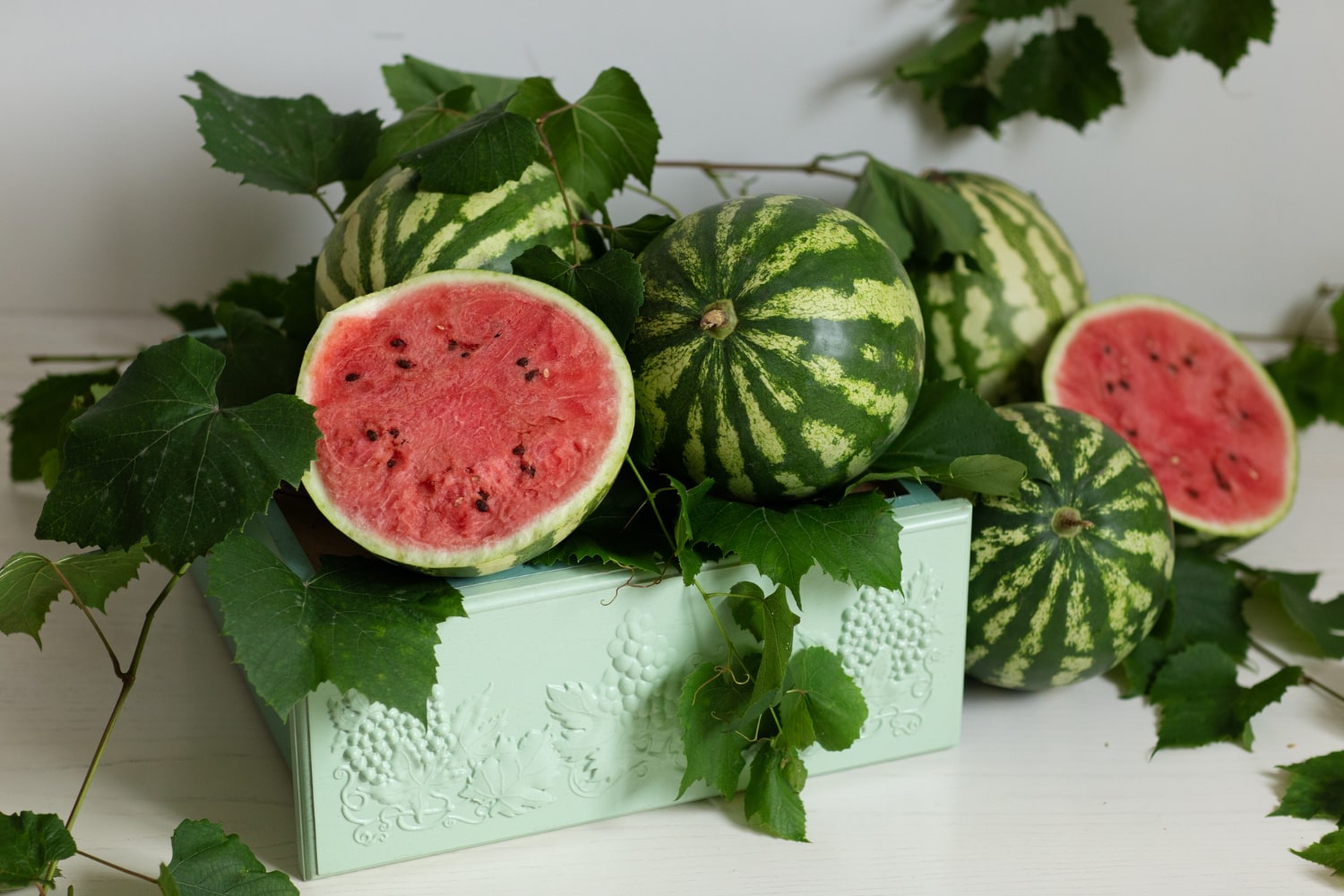Watermelons are not just sweet and juicy fruits perfect for summer, but also a source of fascinating and valuable information. Their vibrant appearance and refreshing taste have made them one of the most beloved fruits in the world. Interestingly, from a botanical perspective, watermelon is considered a berry and belongs to the gourd family. It has a long history, numerous health benefits, and significant cultural meaning. Below are some amazing facts about watermelons that you may not have known.
- Watermelons are believed to have originated in Africa, where they were cultivated more than 5,000 years ago. Archaeologists have found watermelon seeds in the tombs of Egyptian pharaohs. In ancient Egypt, they were valued as a source of water in arid regions. People believed that watermelons had life-giving properties.
- A watermelon is composed of about 92 percent water, making it an ideal fruit for staying hydrated. It helps maintain fluid balance in the body during hot weather. For this reason, it is a popular choice during summer months. It is one of the most effective natural ways to cool down.
- Despite its sweet taste, watermelon is low in calories — only about 30 kcal per 100 grams. It contains almost no fat but is rich in vitamins and antioxidants. It is especially high in vitamin C, vitamin A, and lycopene. Lycopene has been linked to a reduced risk of cardiovascular diseases.
- There are more than 1,200 different varieties of watermelon worldwide. They differ in the color of the flesh, shape, size, and even taste. Some watermelons have yellow or orange flesh, while others are nearly seedless. In Japan, square-shaped watermelons are grown for easier transport and storage.
- The heaviest watermelon on record was grown in the USA in 2013 and weighed over 159 kilograms. This record is listed in the Guinness Book of World Records. Such giant fruits are usually grown for competitions and exhibitions. They are not typically consumed.
- Watermelon is not just used as a dessert but also as an ingredient in salads, drinks, and even grilled dishes. In some cuisines, the flesh is served with cheese or spices, while the rind is pickled. It can also be made into jam or candied treats. Watermelon juice is especially popular during the summer.
- In Ukraine, watermelons are traditionally cultivated in the Kherson region, where the climate is ideal for their growth. An annual watermelon festival is held there, featuring eating contests, record-setting events, and local markets. Kherson watermelon has become a symbol of Ukrainian summer. It is also exported abroad.
- Watermelons are monoecious plants, meaning both male and female flowers grow on the same plant. Pollination is carried out by bees, so the presence of pollinators nearby is essential for a good harvest. Without pollination, the fruit will not develop. This makes watermelons highly sensitive to environmental conditions.
- In China, watermelon is a symbol of summer, harmony, and family togetherness. It is often served at festive meals and picnics. China is one of the world’s largest producers and consumers of watermelons. In some regions, artistic watermelon carvings are created for festivals.
- Watermelon rind also has beneficial properties. It contains the amino acid citrulline, which supports blood circulation. In traditional medicine, watermelon rind is used for detoxification. In cosmetics, it is used as a natural skin moisturizer.
- In some cultures, watermelon is considered a natural aphrodisiac due to its effect on blood vessels. Studies suggest that certain compounds in watermelon may act similarly to medications that support male health. This is mainly due to the presence of citrulline. While not a medicine, it is an intriguing fact.
- Watermelon seeds, despite their small size, are packed with protein, magnesium, and healthy fats. Roasted watermelon seeds are popular in many Asian countries. They are also used in folk medicine as a diuretic. Some companies even extract oil from them.
- In ancient times, watermelon was not just food but also a reliable source of water in deserts. Travelers would carry watermelons on long journeys to prevent dehydration. Thanks to their thick rind, they could retain moisture for an extended period. This made them especially valuable in arid regions without rivers or wells.
- The growth rate of a watermelon depends on its variety, weather conditions, and water availability. Under favorable conditions, a fruit can gain 2–3 kilograms in just one week. This rapid growth impresses both gardeners and farmers. There are even special techniques to speed up ripening.
- In Japan, not only square but also pyramid-shaped, heart-shaped, and patterned watermelons are grown. These shapes are achieved by placing young fruits in specially designed molds. These novelty watermelons are very expensive and are often bought as gifts. They demonstrate how a fruit can become a work of art.
Watermelon is much more than a sweet fruit for hot days. Its history, health benefits, culinary versatility, and cultural significance make it truly unique. These incredible facts about watermelons offer a fresh perspective on a familiar fruit. The more we learn about it, the more we appreciate this juicy and vibrant berry.





